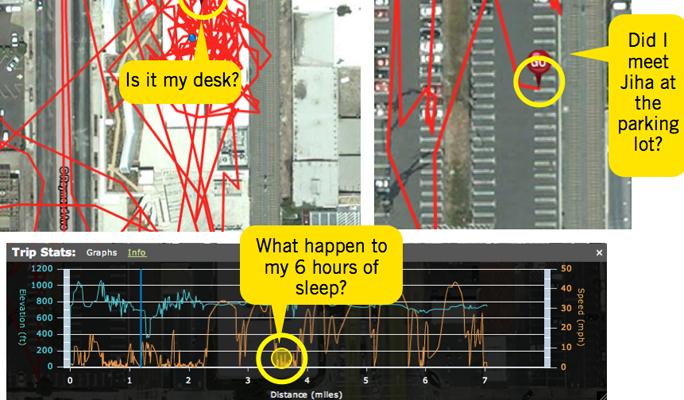Reexamining data
"When we see a brain through a microscope, the brain looks like a microscope. When we see a brain through a computer, it looks like a computer." —Norman Klein
When we look at a long, complicated list of data, what we really see is a series of automatically generated information output by a computer program. We rarely consider the process which has generated this set of data: often an algorithm automatically aggregating data into a pre-determined interpretation or visualization. Through my previous experiments with data logger devices such as GPS, a sound level data logger, and an accelerometer, I realized that each device retains its own unique perspective. This perspective, or bias, is not necessarily directly translatable to our own methods for understanding information. In effect, it is common for us to misread data, or to produce an output of human error.
The risk for misinterpretation by experts, of course, is low, as they have created the interpretive systems and thus better have the ability to sift through and identify its errors. With the pervasive integration of sensor-enabled devices throughout our everyday environment; however, data is no longer meant solely for experts. Whether generated by our own misunderstandings, or by computer malfunction, errors are inevitable.
It is precisely these complicated and tangled interactions between data and ourselves which generate our gaps in understanding. Although our inclination may be to search for the "correct" information, my research has focused on the potential for the existence of gaps to inspire our own subjective interpretations. Errors in understanding often lead us to misremember what actually happened, and in effect, could potentially be very useful in informing alternative stories of our lives.

Case Study
Click here to see the Case Study1





